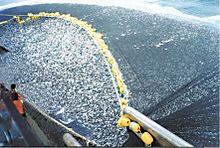
Back موارد متجددة Arabic Възобновяем ресурс Bulgarian Adnodd adnewyddadwy Welsh Fornybar resurse Danish Nachwachsender Rohstoff German Ανανεώσιμος πόρος Greek Rekreskanta krudmaterialo Esperanto Recurso renovable Spanish Taastuv ressurss Estonian منابع تجدیدپذیر Persian



A renewable resource (also known as a flow resource[note 1][1]) is a natural resource which will replenish to replace the portion depleted by usage and consumption, either through natural reproduction or other recurring processes in a finite amount of time in a human time scale. When the recovery rate of resources is unlikely to ever exceed a human time scale, these are called perpetual resources.[1] Renewable resources are a part of Earth's natural environment and the largest components of its ecosphere. A positive life-cycle assessment is a key indicator of a resource's sustainability.
Definitions of renewable resources may also include agricultural production, as in agricultural products and to an extent water resources.[2] In 1962, Paul Alfred Weiss defined renewable resources as: "The total range of living organisms providing man with life, fibres, etc...".[3] Another type of renewable resources is renewable energy resources. Common sources of renewable energy include solar, geothermal and wind power, which are all categorized as renewable resources. Fresh water is an example of a renewable resource.
Cite error: There are <ref group=note> tags on this page, but the references will not show without a {{reflist|group=note}} template (see the help page).
- ^ a b Park, Chris; Allaby, Michael (2017). A Dictionary of Environment and Conservation. Oxford University Press. doi:10.1093/acref/9780191826320.001.0001. ISBN 978-0-19-182632-0.
- ^ What are "Renewable Resources"?, by A. John Armstrong, Esq. & Dr. Jan Hamrin, Chapter 1, The Renewable Energy Policy Manual, Organization of American States, undated. Retrieved 2013-01-05.
- ^ Paul Weiss (1962). Renewable Resources, a report to the committee on natural resources. Washington D.C.: National Academy of Science. Archived from the original on November 5, 2013. Retrieved 2013-01-04.